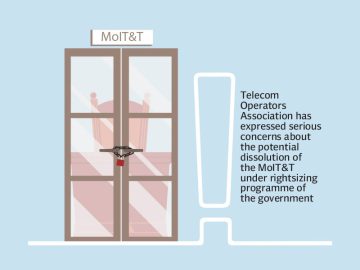Email marketing is probably older than you think. The very first email marketing blast was sent in 1978, by Digital Equipment Corp employee, Gary Thuerk. That blast, which was sent to around 400 recipients, resulted in $13 million in sales of the company’s computers, which adjusted for inflation, would be worth around $79 million today.
Since then, email has continued to be a mainstay of marketing communications, but with new technologies, platforms and trends often taking precedent in the fast-paced marketing world, is email still relevant?
Well, yes. While testing out new formats and ways of doing things is key, with a recorded 4.26 billion email users in 2022 – a figure set to grow to 4.73 billion by 2026 – it’s impossible to ignore the power of email as an important channel for any marketing strategy.
Delivering ROI
One of the biggest draws of email marketing, and perhaps the reason it’s not going anywhere anytime soon, is its ability to deliver consistent returns on investments year on year. The Direct Marketing Association cites the average return on investment for email marketing in the UK to be 42:1 – in real terms, that means a return of £42 for every £1 spent. It’s no wonder 81% of SMBs rely on email marketing as their primary acquisition channel.
In the B2B space, email marketing is king, with 64% of B2B marketers reporting their email strategy as a key factor in meeting business and sales goals, which is unsurprising given that 86% of business professionals prioritise communications through email.
It’s not only the B2B space that benefits from email, though. With 361.6 billion emails sent and received on a daily basis in 2023, you can bet your B2C customers are using email, and using it often.
Getting your communications strategy right is key to getting off on the right foot with new customers, with welcome emails enjoying an open rate of 80% – a great opportunity to build engagement and brand loyalty from the get-go. But B2C email marketing also offers the chance to tailor communications to specific customer behaviours, preferences or points within the customer journey. Product recommendations, abandoned cart recovery emails, and tailored offers and content preference options offer a huge variety of ways to connect with your audience and keep them engaged with your brand.
Unparalleled Targeting
Ensuring the right communications are going to the right segments of your audience is key. When you post on social media channels, or run an advertisement in a newspaper or magazine, you have nowhere near the degree of control over who will see that post or ad compared with a targeting email campaign.
This highly precise level of targeting allows emails to be laser focused on specific demographics, interests, stages in the sales funnel and buying behaviours, which in turn boosts open and click-through rates through serving relevant content and communications to your various audience segments.
On search engines and social media platforms, algorithms play a huge part in what is visible and served up to your audience. No such limitations exist with email marketing, which is delivered directly to the recipient
Email Marketing in 2024
While email has a long and varied history in marketing, it’s also undergone some substantial change. As trends and consumer expectations shift, your email marketing strategy must also adapt if it’s to remain relevant in 2024.
Personalisation is a huge topic in marketing, and customers demand email communications to be sufficiently personalised through hyper-segmentation. Generic email blasts are more likely to result in unopened and deleted emails, or even increase the chance of users unsubscribing altogether.
Linked to personalisation is another key trend in marketing: automation and artificial intelligence. Automation is already widely used in email marketing, allowing consistent and thoughtful communications between customers and brands, and forms a key component of successful drip campaigns.
AI tools make automation technologies even more effective, from cleaning up email lists to assisting with better personalisation and campaign efficacy, they’re fast becoming a central component to scaling successful, cost-effective email campaigns.
Email marketers must also take into consideration the fact that we live in a mobile-first world. 55% of emails are opened on mobile devices, so it’s vital to take this into account when designing emails. If your emails are cumbersome to view and interact with via mobile, it’s likely that you’re missing out on clicks and engagement, and this is backed up by the research. MailChimp found that mobile-responsive email design could increase unique mobile clicks by 15%.
Final thoughts
Email marketing has undergone many iterations since that very first email blast in 1978, and if current trends are anything to go by, it’s not going away anytime soon.
While email is here to stay, the way businesses use it to build direct relationships with their customers is undergoing some significant changes. An increased focus on personalisation, supporting by advancements in AI and automation enables email to retain its status as one of the most cost-effective acquisition channels for nearly any business.
Nicola Crossley is Email Marketing Manager at Climb Online.




